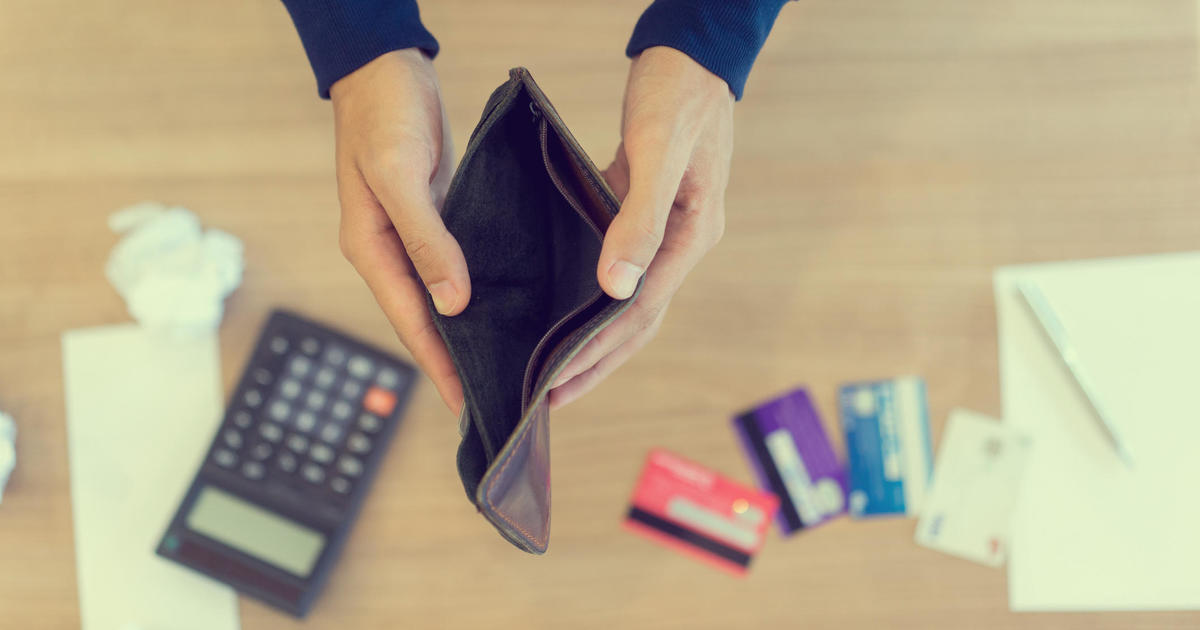[ad_1]
Getty Images/iStockphoto
If you’re struggling to pay off what you owe on your credit cards, you certainly aren’t alone. With the average credit card rate closing in on 23%, any cardholder who carries a balance from month to month is paying a significant amount in interest charges right now. Those compounding interest costs can make it tough to pay down your principal card balance, and today’s inflationary issues are only adding to the issue.
There are clear signs of how pervasive today’s credit card debt issues are, too. For starters, the average credit card balance is now nearly $8,000, an indicator of how reliant many people have become on this type of short-term borrowing. And, issues with maxed-out credit card accounts and delinquent payments are growing, both of which are signs that cardholders are struggling to manage their high-rate credit card debt.
The more credit card debt you carry, the harder it is to get rid of — especially if you’re only able to make the minimum payments on your accounts. So what are the best options to consider if you’re facing $30,000 (or more) in credit card debt? Below, we’ve broken down a few to consider now.
Trying to get rid of $30,000 or more in card debt? Explore your top debt relief options here.
What are the best ways to get rid of $30,000 in credit card debt?
While it may seem impossible to pay off $30,000 in credit card debt, the good news is that you have plenty of options to consider, including:
Try to get a portion of your debt forgiven
Credit card debt forgiveness, which is often referred to as debt settlement, is a process in which you negotiate with creditors to pay less than the full amount owed. This can be an effective way to reduce your overall credit card debt, but it also comes with some risks and considerations.
The potential to significantly reduce the amount you owe and resolve your debt faster than you would making minimum payments are key advantages. It may also help you avoid bankruptcy. However, debt settlement typically negatively impacts your credit score over both the short- and longer-term. There are also potential tax implications on forgiven debt, and if you use a debt relief company, you may incur fees for their services.
Start comparing your credit card debt relief options to find the best solution now.
Consolidate your high-rate debt to reduce interest charges
Debt consolidation involves combining multiple debts into a single loan, ideally with a lower interest rate. By taking this route, you can simplify your payments and potentially reduce the total amount you pay in interest over time. You may also be able to pay off your debt faster with this method.
However, you’ll typically need at least a good credit score to qualify for a debt consolidation loan with a decent rate and there could be potential fees for loan origination. There’s also a risk of accumulating more debt if you continue to use your credit cards after consolidating what you currently owe.
There are a few loan options to consider in this case, including specific debt consolidation loans, personal loans or home equity loans. You can also consider enrolling in a debt consolidation program offered by a debt relief company, which may be less restrictive in terms of borrower qualifications.
Transfer your balances to temporarily get rid of interest
With a balance transfer, you move your current high-interest credit card debt to a new card with a lower introductory interest rate, preferably one with a 0% rate for a promotional period. This strategy can help you save significantly on interest during the promotional period while consolidating multiple payments into one, potentially allowing you to pay off debt faster.
It’s worth noting, though, that balance transfers usually require good to excellent credit to qualify, so this may not be an option if you’re dealing with a few credit issues. There are typically also balance transfer fees to account for, which are generally 3% to 5% of the transferred amount.
To maximize the benefits of a balance transfer, look for cards with the longest 0% APR period possible and calculate whether the balance transfer fee is worth the potential savings. You should also avoid making new purchases on the card to prevent accumulating more debt.
Wipe the slate clean by filing for bankruptcy
Bankruptcy should be considered a last resort due to its long-lasting impact on your financial life. However, in cases of insurmountable debt, it may be a necessary option. Depending on the type of bankruptcy, you can either liquidate your assets to pay off debts and discharge the remaining unsecured debts or reorganize your them into a multi-year repayment plan.
But while bankruptcy can provide a fresh financial start, it also has significant drawbacks, like the negative impact it has on your credit score, which can last for up to 10 years. Not all debts are dischargeable, either — and it can be difficult to obtain credit, housing or employment after declaring bankruptcy.
The bottom line
Eliminating $30,000 in credit card debt is a significant challenge that requires time, discipline and commitment. However, with the right strategy and persistence, it can be achievable. And, as you work toward becoming debt-free, you’ll gain valuable financial skills and habits that will serve you well in terms of maintaining long-term financial health.
[ad_2]
Source link

